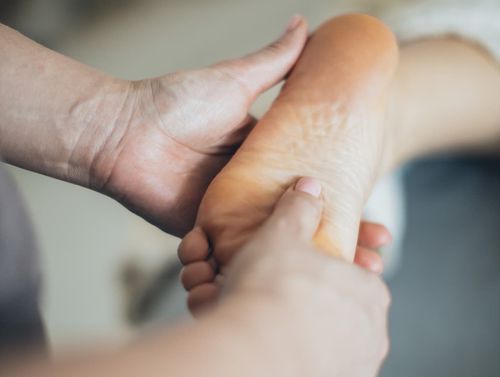What is Trigger Point Therapy?
Trigger point therapy is a type of manual therapy used for treating trigger points. A trigger point is a painful muscle contraction located in a tight band of muscle fibre, which restricts the range of motion and causes poor circulation. It may cause localised pain or send pain to other parts of the body.
A certified practitioner of trigger point therapy employs a series of deep strokes and sustained pressure to the trigger points to stimulate circulation and mobility. As well as improving circulation and mobility, this manual technique also treats a variety of conditions, including headaches, sciatica, frozen shoulder, arthritis, hip pain and TMJ disorders, among others.

Why Study Trigger Point Therapy?
Studying trigger point therapy and mastering the techniques used in this modality will make you a valuable figure in the health and wellness industry. You will play a crucial role in the lives of many people. Athletes will regularly seek your service for the treatment and prevention of injury, office workers and tradies will think of you at the first sign of pain, and the elderly will constantly look for your assistance.
What Does It Take to Study Trigger Point Therapy or Become a Practitioner of It?
If you're bent on succeeding in trigger point therapy, you must be adept at anatomy and physiology because a course in this modality covers these subjects along with kinesiology. It's also worth noting that a Certificate IV in Massage Therapy, or a similar qualification, is a prerequisite for entry into the course.
Suppose you're already a certified massage therapist, physical therapist or practitioner of another manual therapy, and happen to be registered with the relevant industry body, you can enrol in a trigger point therapy course straight away.
Course and Study Options for Trigger Point Therapy
In order to become a qualified practitioner of trigger point therapy, there are certain routes that you need to pass and qualifications to secure. All trigger point therapists in Australia have completed a Level IV certificate in massage therapy, followed by a Diploma of Remedial Massage.
Once you have satisfied both requirements, you may pursue an advanced diploma or bachelor's degree in myotherapy, which covers the theoretical and practical aspects of trigger point therapy. An advanced diploma will take a year and a half to complete, while a bachelor's degree is a three-year program.
Most schools that offer massage training programs deliver their coursework on-campus, online or through a blended learning system. Having said that, it's important to choose one whose offerings match your needs to ensure that your learning adventure goes off without a hitch.
How to Choose a School or Course in Trigger Point Therapy
You can never go wrong with a registered training organisation (RTO). Besides boasting a nationally recognised curriculum, their graduates have successfully gained membership with the country's peak bodies for massage therapists, including Massage & Myotherapy Australia (MMA), Australian Natural Therapists Association (ANTA) and Australian Traditional Medicine Society (ATMS), among many others.
We have provided a list of qualified training providers for trigger point therapy at the top of this page. Take the time to compare their syllabi, course fees, delivery methods, as well as the career outcomes of their graduates. Now if you're looking for an accredited Continuing Professional Education (CPE) course, chances are you will also find it on the list.









